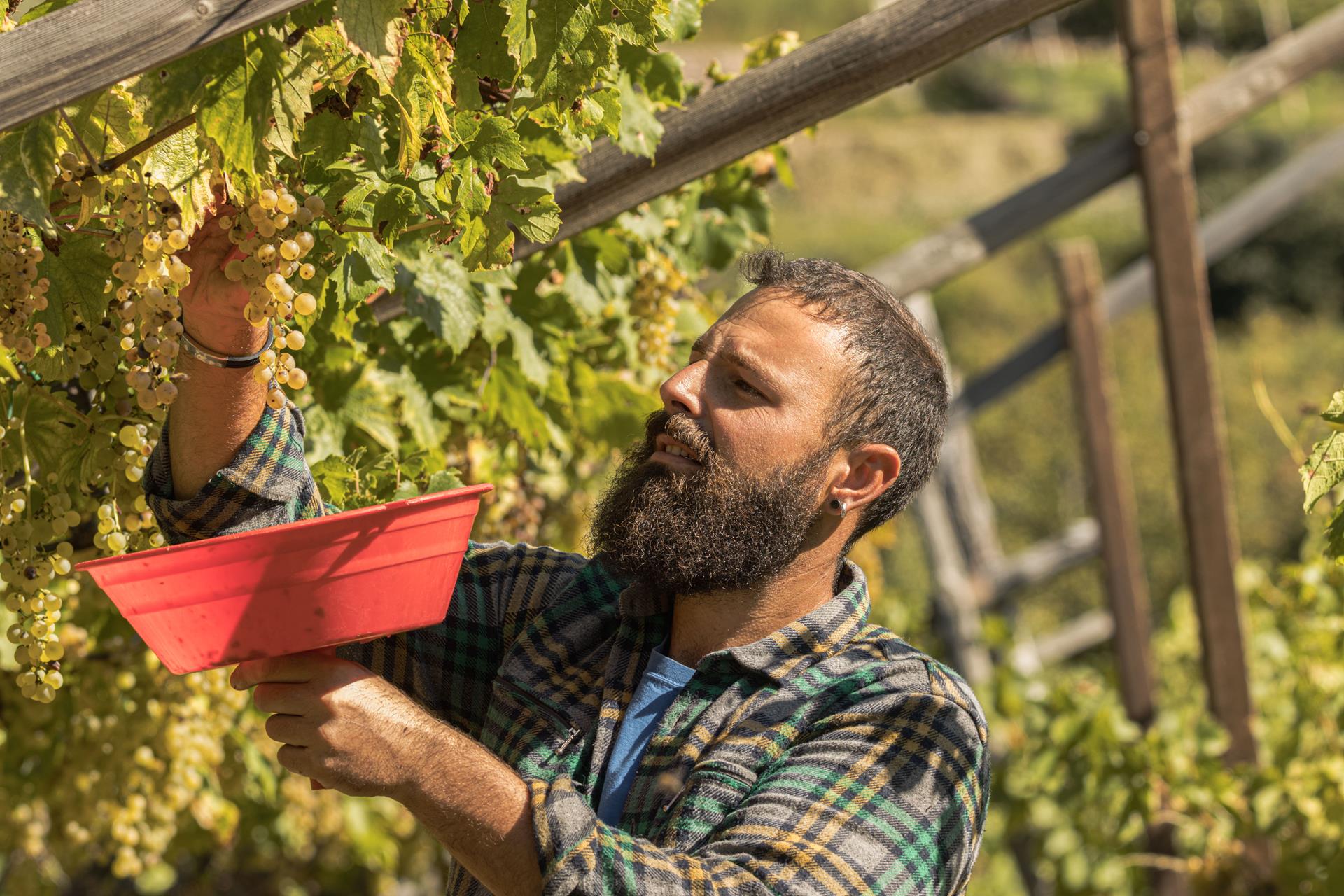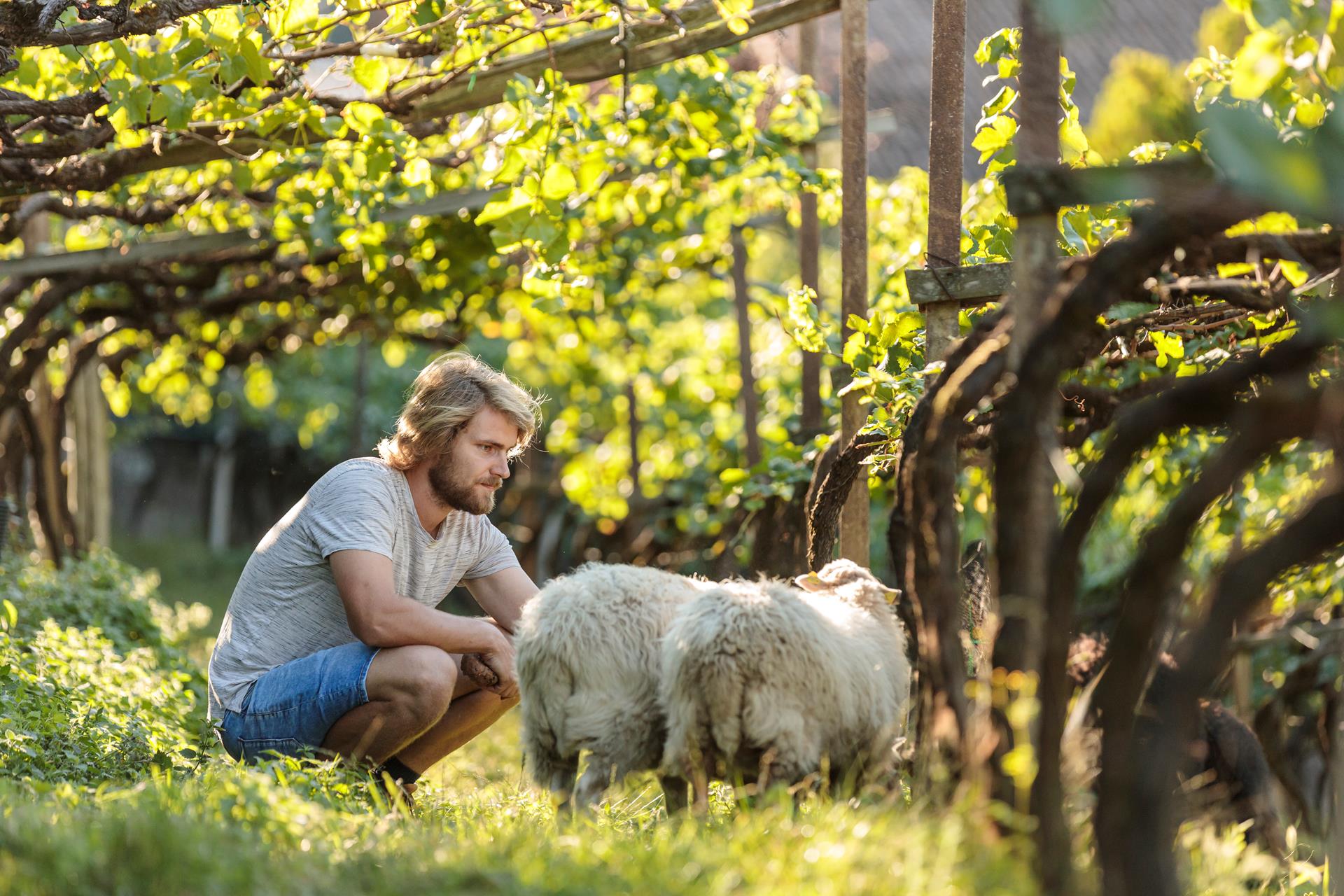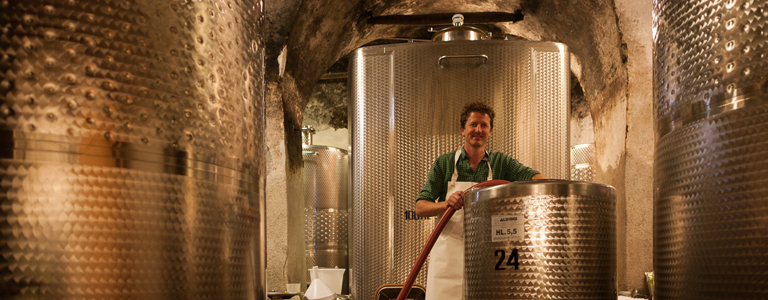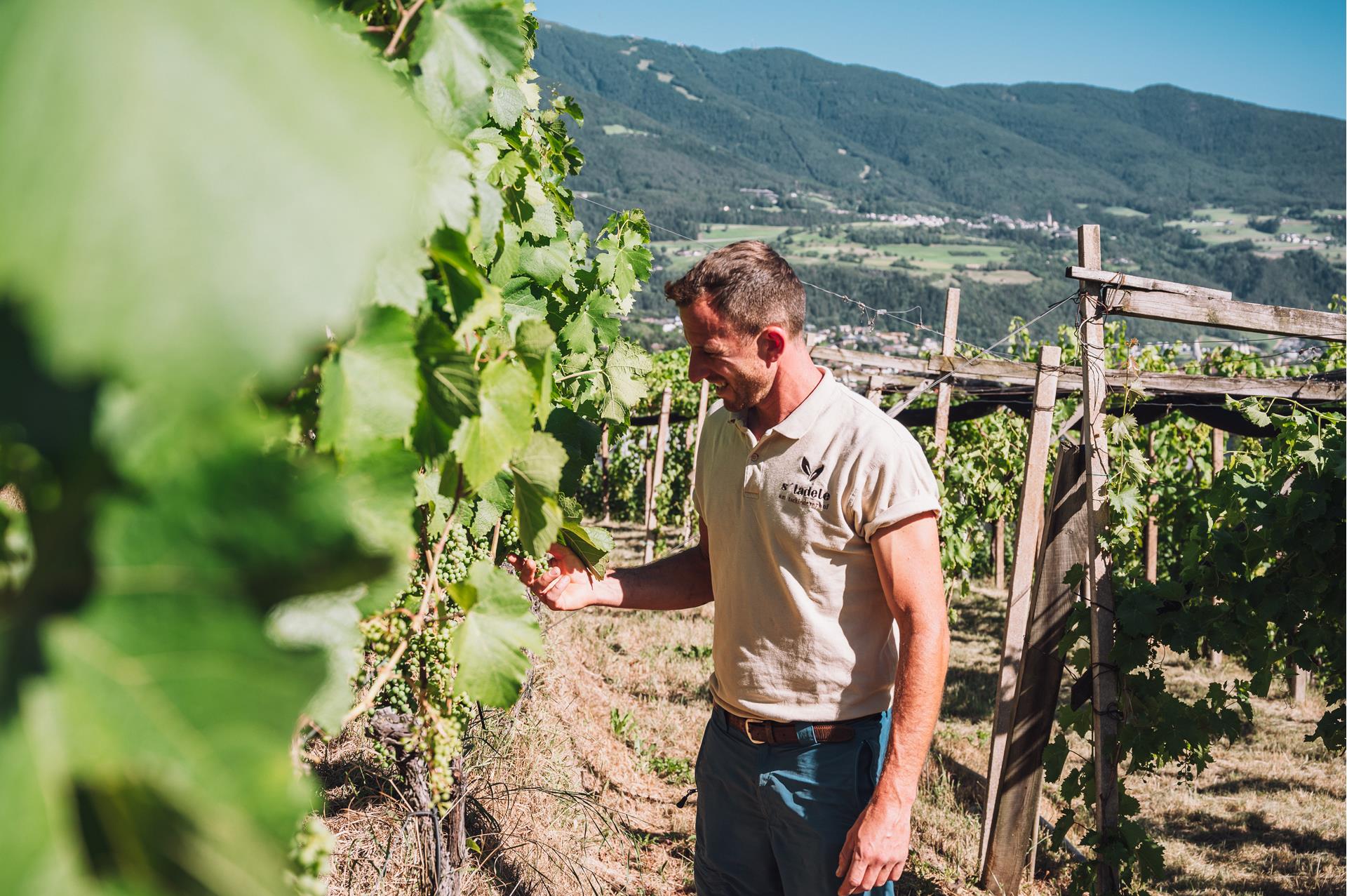“My family’s roots are also the foundation of my wines.” With his winegrowing estate in Cortina sulla Strada del Vino, Manuel Taddei has committed to going back to those roots. He is a third-generation winegrower, and he firmly believes that the character of a wine is always influenced by the people working on the estate. And its development, too: “A mix of patience, endurance, and passion helps us to grow continuously and improve our estate,” says Manuel Taddei.
In 2013, he replanted his grandmother’s vineyards in Val di Cembra, which had been lying fallow for more than 50 years—another testament to his return to his roots.
Because it is not just the reuse of old vineyards that is so special, nor is it the “cross-border” cultivation in Cortina in Alto Adige and Val di Cembra in Trentino. What is really special is the location of those vineyards: The area under vines of newly planted Müller-Thurgau is located at approximately 900 meters above sea level; the area where Taddei has planted Sauvignon vines, at approximately 750 meters. Taddei’s range of varieties is completed by Chardonnay.
2022 saw the first harvest brought in at the Manuel Taddei Winegrowing Estate in Cortina sulla Strada del Vino. “We are striving to create extraordinary and harmonious high-quality wines that are full of character,” says Taddei with regard to his philosophy. That also means that the wine is given all the time it needs to mature and unfold its potential. Accordingly, the Müller-Thurgau and Sauvignon wines go on sale one year after the harvest whereas the Chardonnay even takes two and a half years to mature.



























